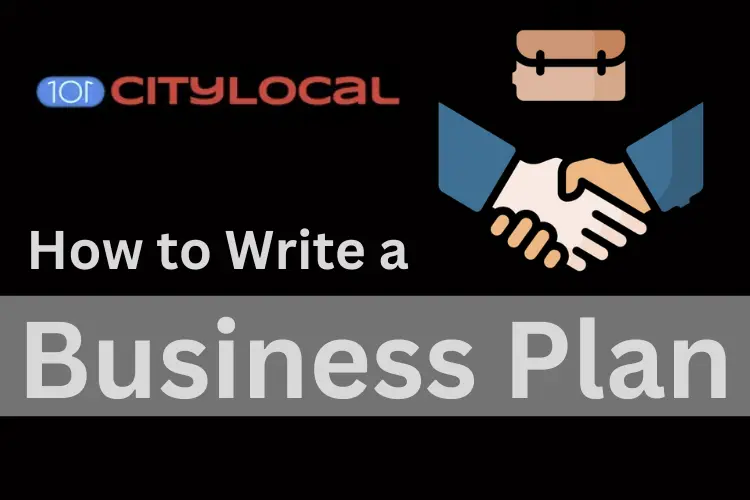Table of Contents
Intro
If you’ve ever considered starting your own business you might’ve heard the term “business plan” thrown around. This is because it is an integral part of assessing and putting into action operations for the business. Business owners use these plans to organize their services and project their success. With a great business plan, you can identify your strategy, potential roadblocks, and decide how you’ll get your resources.
If you want your business to be successful and grow, read on to find out about how you couldn’t write an effective and organized business plan so you not only understand the scope of your market, but also the strategy behind the best players in the industry.
What is a business plan?

Before we get into the steps of a business plan, we want to tell you exactly what it consists of.
A business plan is essentially a document or a set of documents that describe a business and its entirety. This covers the goods or services you'll be selling, the profit you'll earn and how you'll make it, finance, business strategies, and details on the executives and employees. A business plan's primary goal is to describe your operating and financial objectives and how you plan to meet them. Consider it a timeline for the coming five years. Even better, you can show how serious you are about your company by sharing this with potential investors.
Is a business plan worth the time and effort?
A business plan is valuable because it serves as more than just a guide for you; before making an investment, potential investors will assess your plan's projections of growth and viability.
Think of contestants on Shark Tank: before the sharks invest into a product they ask about the profit, how they’re getting their products, any other partnerships, and their strategy. They essentially ask them to summarize their business plan while they present their products. Therefore, it is a critical part of running your business.
Here’s a breakdown of other reasons for creating a business plan:
- Scope: A business plan is a terrific way to organize your thoughts, comprehend the extent of your company, and determine how much capital you'll require to launch.
- Priorities: A business plan is a wonderful approach to prioritize the ideas with the best potential of success if you have several for the future of your company and to make note of any others that could be viable.
- Research: A business plan is an excellent tool for gathering information about competing companies so that you can discover what they do that makes them successful and what you can do differently to outperform them. Thus, business plans are excellent for strategy.
- Recruiting: When you are hiring new employees, you may outline your requirements in your business plan because it will describe the character of your company and the kind of people you'll need to support its expansion.
Common mistakes when creating an outline for a business plan

Before we tell you what to do when creating a business plan here is what not to do.
Inexperienced business owners often rush through their business plan leaving them to either overkill this crucial document or have little to no effort in the presentation of it.
Make sure that the spelling and grammar is on point. Have multiple editors and even a professional writer assess typos and grammatical mistakes thoroughly.
On the business side of things, make sure you’re working with viable team partners that will help you assess the projection and potential profits of your business especially if you’re charging into new grounds.
Lastly, numbers are the most important thing when it comes to investors because all they want to know is whether your business makes them money or not. Good luck finding capital if you don’t have a strategy that shows your maximum profits and cash flow statements. This is the most crucial part of your business plan when it comes to finding resources to support your company; include any and all financial projections
How do you write a business plan?
Now that you know why a business plan is so important we hope that you’re convinced. Now let’s see how you can write one!
Decide on a business plan format

Before you can actually get to writing detailed graphs and reports you need to decide on the type of format you’ll be using. There are typically three formats that you can choose from that work for various types of businesses:
- Traditional: A traditional business plan is the most common and will cover the standard components of a company. Although they are substantially longer, they are necessary for loan lenders and venture capital businesses.
- Nonprofit: A nonprofit business plan is, as the name implies, for companies that promote social and community well-being. It resembles a conventional business plan but also contains a part outlining the effect the organization hopes to have. Donors will demand that this strategy be followed.
- Lean: A lean business plan is a shorter version of your traditional business plan. In order to be given to prospective recruits, this strategy covers the most crucial facts.
Compose an executive summary

Now that you’ve decided to pursue a distinct business plan format, you will first begin by drafting an executive summary. Normally, it is advised to write this part last, but we think you should start asking yourself the crucial questions at the beginning so that your strategy may be more organized. You may go back and make changes after writing the rest of your business plan before it is printed. The most critical part of your strategy will be this section because it will summarize everything for possible investors. It highlights the important details because it provides an overview of your company.
Here is what an executive summary entails:
- Business idea: What does your company do?
- Business objectives and vision: What does your company want to accomplish?
- Product details and delineation: What do you offer, and why is it unique?
- Target audience: Who are your target customers?
- Business strategy: How do you want to reach your customers?
- Sales and profit: What is your present income?
- Projected financial situation: What sort of income do you anticipate?
- Investment: How much are you requesting?
- Recruits: Who is associated with the enterprise?
Describe your business
The summary of your company should be straightforward and represent the vision you are hoping to accomplish. You should be answering both about who you are and what it is that you do and plan to do. This section of your business plan should highlight your unique value proposition and rationale for investment. Your business description should also contain any details regarding your organizational structure, business strategy, industry, proposed objectives or values, background information, or the history of your company.
Pro-tip: Your mission statement should be clear enough to let people know why exactly your business exists and why they should care.
Conduct a market research

Most businesses fail after the first five years and this is because they do not perform a successful market analysis. If you have a product that doesn’t have much demand, your business will fail eventually. We understand that doesn’t really sugarcoat anything but you need to choose the right market for your products, one that contains a lot of customers who will understand and desire your product. Sometimes you can be at the right place but wrong time so you’ll also have to see the scope of your project in terms of the foreseeable future. Whether anyone is going to read your market analysis or not shouldn’t be a reason why you choose to include it. Overall, it's a crucial component of your research because it evaluates your product and provides you with an insight of the market competition.
A great way to do this is to do a SWOT analysis. SWOT stands for strengths, weaknesses, opportunities, and threats. You can present these through a grid and it is a great way that you can determine your competitive edge in the market by providing you a visual aid.
Strengths | Weaknesses |
Opportunities | Threats |
Describe the organization's management

You should be the focus of the section on organization management. In this area, you should provide investors a general picture of who you are and why you run your business. You might also include your company's legal structure, such as whether you operate as a lone proprietor or with other partners. You can gain from displaying an organizational chart that outlines the roles and duties of your company's management team if your business has one.
Add a list of your goods and services
Of course, your business plan has to include a list of your products and other services. You will also need to provide information on why they are lucrative and the future of your items in addition to photographs, descriptions, and prices. Additionally, details on the sources of your items will be needed.
User information
They say to keep your enemies close but more than researching your competitors, you should be aware of your customer demographic. This includes the region in which they live in, their age range, their behaviour patterns, what technology they use and how much they use it, and even how much they earn. But outlining their core principles, worldviews, and perspectives is more crucial. This will benefit you since you may consider their personalities while choosing promotions that are essential to your marketing plan.
Create a marketing strategy

Making a marketing plan will be required in addition to conducting market research. Dave Gerhardt, one of the best marketing brains in the country, distills marketing down to four key components: what you're releasing, when it debuts, a quantifiable revenue objective, and all the activities and dates associated with it.
You can remember this by the four P’s
- Price
- Product
- Promotion
- Place
Give a plan for your operations and logistics

Making an operational strategy is one method to bring your ideas to life. Ask a potential investor to help you create a well-organized outline of your business's activities, and include all the criteria you would use to choose a trustworthy business partner. Among other things like inventory and facility space, you'll want to add supplier information, information on production such as manufacturing or wholesale, equipment that is necessary to keep everything going, and information on shipping and fulfilment.
Create a budget

The last part of your business plan will include a financing section. An income statement, balance sheet, and cash flow statement should all be included in the finance section.
- Income statement: An income statement provides the reader a glimpse at your sources of income and outlays for a certain time frame. This explains the profit/loss of your business. It is a terrific method to stay updated on upcoming milestones if your business is just getting started.
- Balance sheet: A balance sheet shows how much equity, also known as what you own and what you owe, you have in your company. Liabilities must be subtracted from assets in order to obtain the total equity.
- Cash flow: In contrast to your income statement, your cash flow statement specifies when revenues are received and when costs are paid. Positive and negative values are used to evaluate a cash flow statement. If you have more profit than loss, your cash flow is positive.
Conclusion
We hope you have benefited from our step-by-step guide on how to create a business plan. Designing a business plan is extremely lucrative and we have fingers crossed that we have convinced you to plan your business ahead of time. The most crucial thing to keep in mind while planning is to understand your audience and have a specific goal in mind. When you are confident in these two components, you can start spending time researching how to implement promotions and products that will appeal to your target market.


Lisa R.Hanger